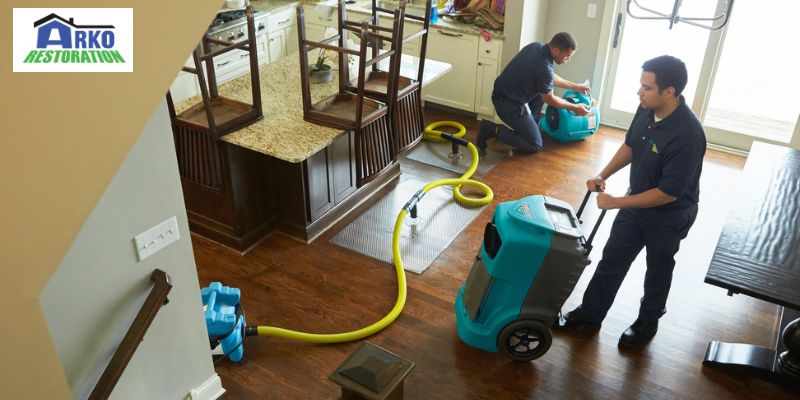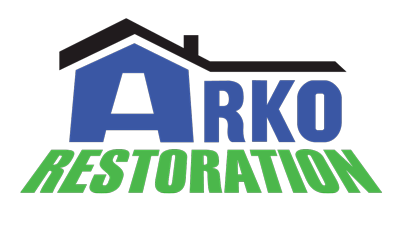When dealing with water damage in your home or business, it’s important to understand the difference between water mitigation and water damage restoration. While the terms are often used interchangeably, they refer to two distinct processes that are crucial for addressing water damage. Water mitigation involves the immediate steps taken to prevent further damage and minimize the impact of water on your property. This includes extracting standing water, drying out affected areas and disinfecting to prevent mold growth. On the other hand, water damage restoration involves the process of restoring your property to its pre-damage condition, which may include repairs, structural drying and rebuilding. It is essential to understand the difference between these two terms as it can help you better navigate the restoration process and work more effectively with your restoration company. Moreover, it can also help you to manage your expectations regarding the timeline and cost of the restoration process.
Water mitigation and water damage restoration are two related but distinct processes that are often employed in response to water damage. While both involve addressing water damage, they differ in their goals and the methods used to achieve them.
Here are some differences between water mitigation and water damage restoration…
#1 Goal:

The primary goal of water mitigation is to prevent further damage to the property and its contents by rapidly removing excess water and moisture from the affected areas. This involves the use of specialized equipment such as water pumps, dehumidifiers and air movers to dry out the affected areas as quickly and thoroughly as possible. The focus is on preventing the growth of mold and other harmful microorganisms which can cause further damage and pose a health hazard.
Water damage restoration, on the other hand, is focused on repairing and restoring the property to its pre-damaged condition. This involves repairing or replacing damaged materials, such as drywall, flooring and electrical systems, as well as addressing any underlying issues that may have caused the water damage in the first place. The goal is to return the property to a safe and functional condition.
#2 Timing:

Water mitigation is typically carried out immediately after water damage has occurred. The goal is to act quickly to prevent further damage and to minimize the overall impact of the water damage. Mitigation may involve emergency services, such as water extraction and drying, to prevent the growth of mold and other harmful microorganisms. Mitigation is often carried out before the insurance adjuster has had a chance to inspect the property.
Water damage restoration, on the other hand, typically begins once the water mitigation process is complete. Restoration may involve repairing or replacing damaged materials, as well as addressing any underlying issues that may have caused the water damage. Restoration may be a more involved process and may require more time to complete.
#3 Scope:
Water mitigation is typically a more limited process than water damage restoration, as it focuses primarily on removing excess water and drying out the affected areas. Mitigation may involve removing damaged materials that cannot be salvaged, such as carpeting or insulation, but it is generally not focused on repairing or replacing these materials.
Water damage restoration, on the other hand, involves a more comprehensive process of repairing and replacing damaged materials. Restoration may involve rebuilding walls, replacing flooring and repairing or replacing damaged electrical systems or plumbing. The scope of restoration will depend on the extent of the damage and the specific needs of the property.
#4 Expertise:
Water mitigation and water damage restoration both require specialized knowledge and equipment, but the expertise required for each process is slightly different. Water mitigation professionals typically have expertise in emergency water extraction and drying, as well as knowledge of building materials and how they respond to water damage. They may also have training in mold prevention and remediation.
Water damage restoration professionals, on the other hand, may have expertise in a wider range of areas, including carpentry, electrical systems and plumbing. They may also have experience working with insurance companies to ensure that the restoration work is covered by the property owner’s insurance policy.
#5 Cost:
The cost of water mitigation is typically lower than the cost of water damage restoration, as the scope of work is generally more limited. Water mitigation primarily involves removing excess water and drying out the affected areas, which can typically be accomplished within a few days. The cost of mitigation may include the cost of equipment rental, labor and any necessary repairs or replacement(s) of damaged materials.
Water damage restoration, on the other hand, can be a more involved and costly process. The cost of restoration may include the cost of repairs and replacement(s) of damaged materials, as well as the cost of labor and equipment. The overall cost of restoration will depend on the extent of the damage and the specific needs of the property.
#6 Liability:
Water mitigation and water damage restoration both involve potential liability issues that property owners should be aware of. If water damage is not addressed in a timely and effective manner, it can lead to mold growth and other health hazards, which can result in liability for property owners.
Water mitigation professionals typically carry insurance to cover any liability issues that may arise from their work. Restoration professionals may also carry insurance, but property owners should be aware that liability can also arise from the work of contractors or subcontractors hired to perform the restoration work.
Summary:
In summary, while water mitigation and water damage restoration are both important processes in response to water damage, they have different goals and are carried out at different times. Mitigation is focused on preventing further damage and is carried out immediately after water damage has occurred, while restoration is focused on repairing and restoring the property and is carried out once the mitigation process is complete.


